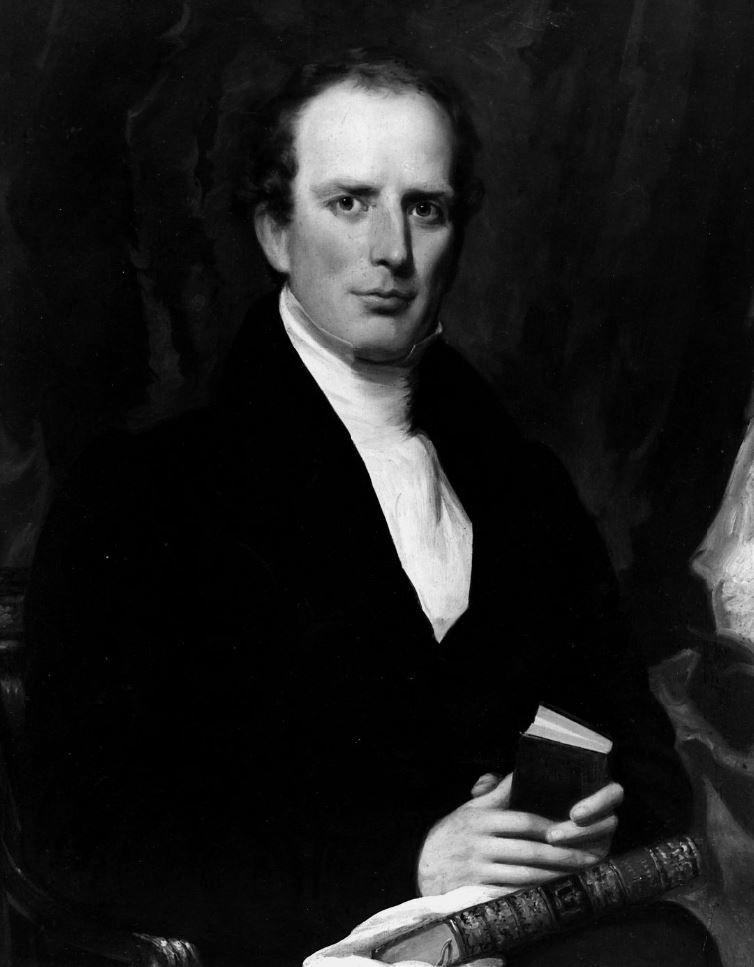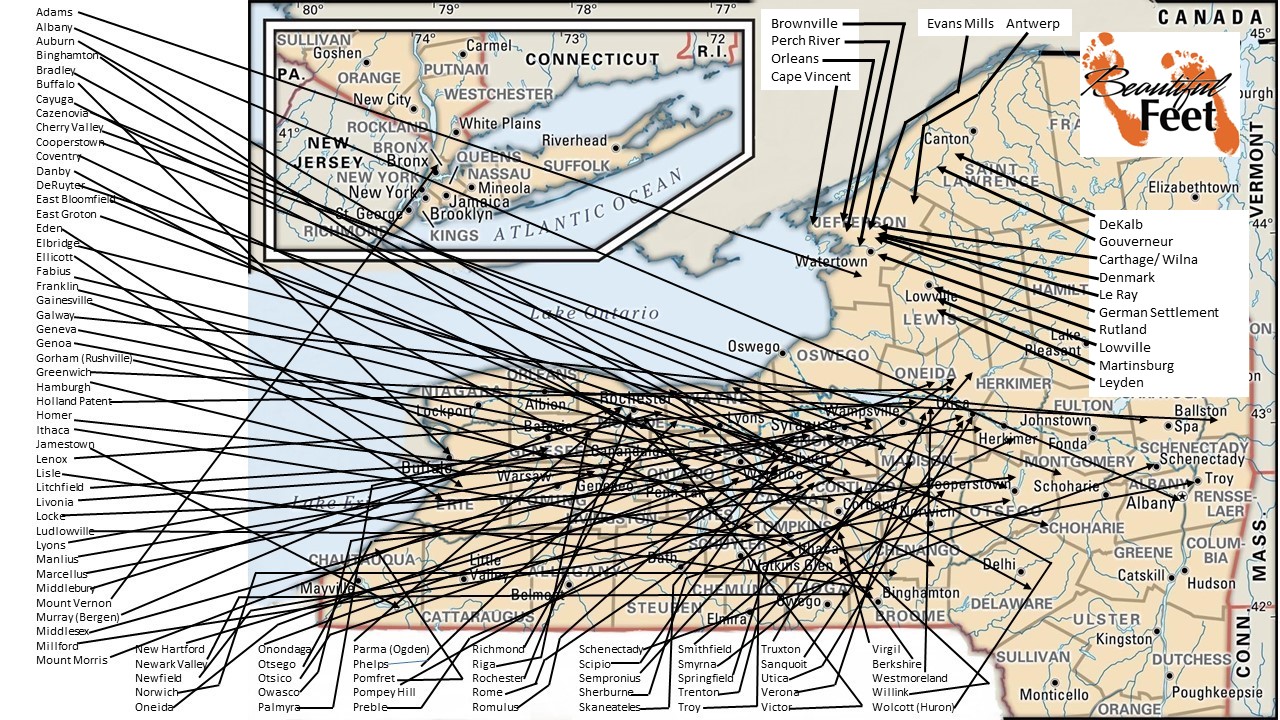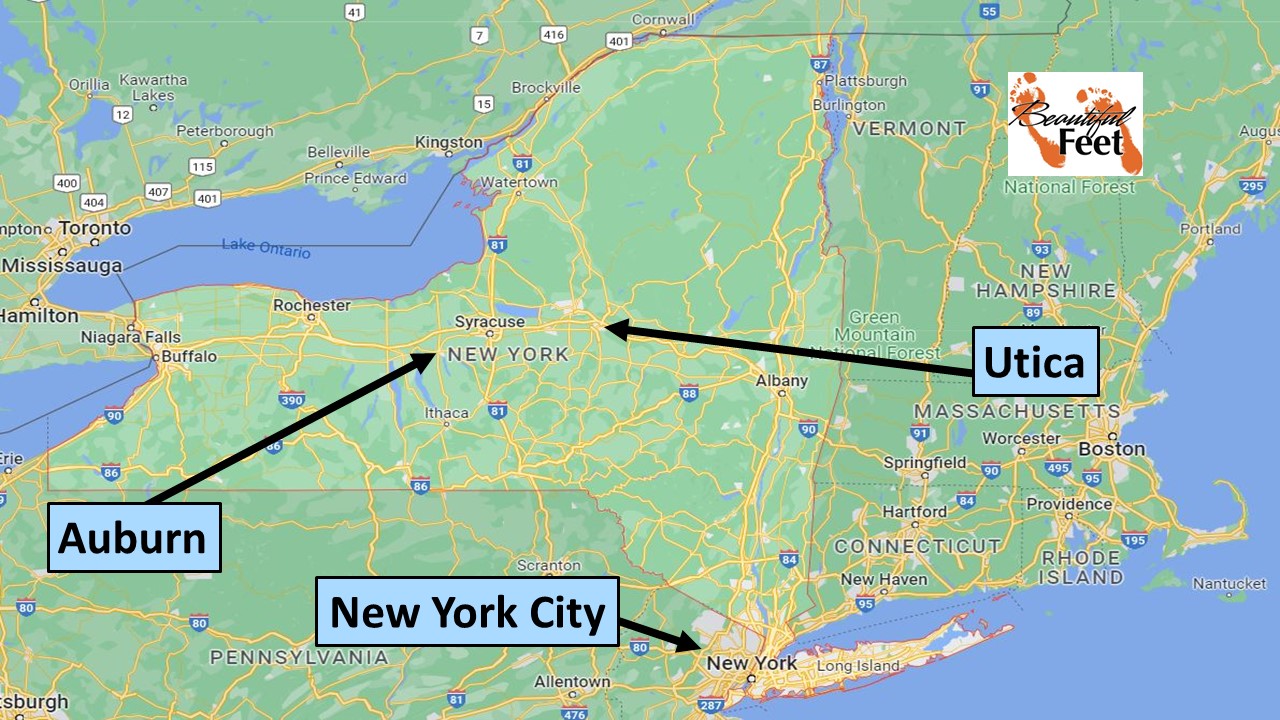1826 Auburn, New York Revival



Charles Grandison Finney – Father of modern revivalism and the leading figure of the Second Great Awakening
Introduction
Charles G. Finney’s (1792-1875) unique methods of evangelism earned him the title of the “father of modern revivalism.” His methods paved the way for other mass-evangelists, like Dwight L. Moody, R. A. Torrey, John W. Chapman, Billy Sunday, and Billy Graham, who adapted and built upon Finney’s methods.
Background Information
With this revival account being one in a sequence of revivals during the life of Charles G. Finney, we recommend first reading our accounts of the initial revivals he was involved with in the north central part of New York State:
► 1824 Evans Mills German Settlement Revival
► 1824 Antwerp, New York Revival
► 1824 Revival at Perch River and Other Locations
► 1825 Revival in Gouverneur, New York
► 1825 Revival in De Kalb, New York
► 1825 Revival in Western, New York
► 1825 Revival in Rome, New York
► 1826 Revival in Utica, New York

State of New York: The black lines indicate locations where revival spread during the 1820s and 1830s. The area became known as the “Burned-Over District.”
From Utica to Auburn
During the time when the revivalist Charles Finney was involved with the Utica, New York Revival, the pastor of the First Presbyterian Church in Auburn, New York, Dirck Cornelius Lansing (1785-1857), came to Utica to see the revival firsthand. After recognizing that the revival was a genuine move of the Holy Spirit, the pastor asked Charles Finney if he would come to Auburn to conduct services in his church.

Dirck C. Lansing
Pastor of First Presbyterian Church
in Auburn, NY
Finney agreed to the request and arrived there in the summer of 1826 and stayed until the fall of the same year.
Opposition to Revival Efforts
The professors at the Auburn Theological Seminary were very united in their opposition to Finney and his revival efforts. Their opposition was based on the assumption that if Finney were to be allowed to minister in the Presbyterian churches, they would be damaged in some way, because Finney never had a regular theological education.
There was also opposition to the new evangelical methods used by Finney, like allowing women to pray and exhort during church services. The other contentious point was doctrinal issues which led to the split of the Presbyterian Church (Old School – New School Controversy).
Even with all the pamphlets, newspaper articles, and letters that circulated among the ministers, attacking Finney, he made it a point to never respond to the opposition.
Finney Receives a Vision
Not long after Finney’s arrival in Auburn he had a vision in which the Lord showed him a trial he was to pass through (evidently related to the attacks from the ministers in the area). This is Finney’s account of that vision.
He drew so near to me while I was engaged in prayer that my flesh literally trembled on my bones. I shook from head to foot, like a man in an ague fit, under a full sense of the presence of God. At first, and for some time, it seemed more like being on the top of Sinai, amidst its full thunderings, than in the presence of the cross of Christ.
Never in my life, that I recollect, was I so awed and humbled before God as I was then. Nevertheless, instead of feeling like fleeing, I seemed drawn nearer and nearer to God—seemed to draw nearer and nearer to that Presence that filled me with such unutterable awe and trembling. After a season of great humiliation before Him, there came a great lifting up. God assured me that He would be with me and uphold me; that no opposition should prevail against me; that I had nothing to do but to keep about my work, and wait for the salvation of God in regard to all this matter.
The power of that vision led Finney to place total trust in God, regardless of the severe attacks that came against him from the many ministers that were opposing him. The vision also led him to remain perfectly calm, as well as to have “kind feelings toward all the brethren” that were opposing him.
God assured me that they could not put me down.

The revival in Utica preceded the one in Auburn
The Revival Surged Ahead
Regardless of the massive attacks against Finney, the work in Auburn greatly impacted the people and it became a powerful movement.
Notable Conversion
Finney tells of a remarkable story about one of the elders in the Auburn church—Richard Steel. The man had been very timid and doubt-filled. But after this man “received such a wonderful baptism of the Holy Ghost,” he became a different man.
The Conversion of a Hat Maker
There was a hat maker by the name of Hawley, whose wife was a Christian. With Hawley being a Universalist, he opposed the revival and forbade his wife from going to the revival meetings. This led her to go into her room and “pour out her soul to God” in prayer.
When Mrs. Hawley finished her prayer and came out of the room, Mr. Hawley said that if she was going to go to the meeting, he would accompany her. At the time he was thinking he would find something by which he could mock and ridicule the revival.
Charles Finney’s practice was to never write out his sermons, nor even make any notes prior to preaching. The Holy Spirit would always give him a verse from which to preach, and he would then speak for his typical two hours on that subject.
That evening, with the Hawleys being present, and just before Finney was to rise and preach, the Holy Spirit gave Finney what to speak about, and “it was the words of the man with the unclean spirit, who cried out ‘let us alone.’”
During the sermon Finney saw a person fall from their seat and they cried out in “a most unearthly and terrific manner.” The sermon was stopped, and Finney went to the man, and finding it was Hawley, tried to speak to him, but the Holy Spirit’s conviction power was so strong on him that all he could do was weep “like a child, confessing his sins.”
The loud weeping made it impossible for Finney to continue with the sermon, so he dismissed the meeting. Over the course of the next few days, with Mr. Hawley remaining overcome by the conviction power of the Holy Spirit, he sent for some of his friends to come to his home, and to them he confessed his sins openly. That was the only way he was able to find relief for his soul.
Soon after this Mr. Hawley was elevated to a leadership position in the church and became very powerful in his efforts in promoting the revival, and through his work he brought a lot of the opposition to an end.
Opposers of Revival Split the Church
There were several very wealthy and influential men who opposed the revival, and though they were unconverted, they organized a following and started another church. Though they were successful in starting that second church, the Lord ultimately got the victory, and in time nearly every one of those opposers was converted.

Area around Auburn, New York, that was impacted by the revival
Revival Spread to Neighboring Churches
While the revival in Auburn was ongoing, Finney didn’t restrict himself to preaching at the First Presbyterian Church of Auburn. He also ministered in other churches in the area, and the revival spread to churches along Cayuga and Skaneateles Lakes.
Confession to the World
Being grieved with their level of apathy and complacency, the congregation of the First Presbyterian Church decided to make a “public confession of their backsliding” and unchristian conduct. The leaders wrote out the confession, covering every area of their failure, and read it before the congregation. While reading, the entire congregation stood, with “many of them weeping, while the confession was read.”
Following that open and public acknowledgement of their past failures, “the work went forward with greatly increased power.”
Results of the Revival
► It is unknown how many were converted during the revivals in this area, but for the First Presbyterian Church of Auburn, they had 54 added to their church’s membership. That may sound like a low number, but considering the enormity of the opposition Finney was facing, as well as the church split, it is an impressive number.
► The revival impacted churches throughout that part of the state, with it spreading in every direction.
► In the spring of 1831 another powerful revival swept through Auburn.
Finney Revival Account List
Access all accounts of Finney’s revivals using this link.
Primary Sources
► Chapter XV Revival at Auburn: The Memoirs of Charles G. Finney by Charles G. Finney
► The Memoirs of Charles G. Finney: The Complete Restored Text by Charles G. Finney
Secondary Sources
► Charles G. Finney by Wikipedia
► Charles Grandison Finney & the Second Phase of the Second Great Awakening by Christian History Institute
► Eerdman’s Handbook to Christianity in America by Mark A. Noll
► Fire From Heaven by Robert Evans
► Great Revivals and the Great Republic by Warren Candler
► Man of Like Passions: The Life Story of Charles Grandison Finney by Richard E. Day
► Memoirs of Revivals of Religion by Charles G. Finney
► Memoir of the Life and Character of Rev. Asahel Nettleton by Bennet Tyler
► New England Revivals by Bennet Tyler
Return to List of Revival Stories
Chet & Phyllis Swearingen:
Office: (260) 920-8248
romans1015@outlook.com
Beautiful Feet
P.O. Box 915
Auburn, IN 46706

